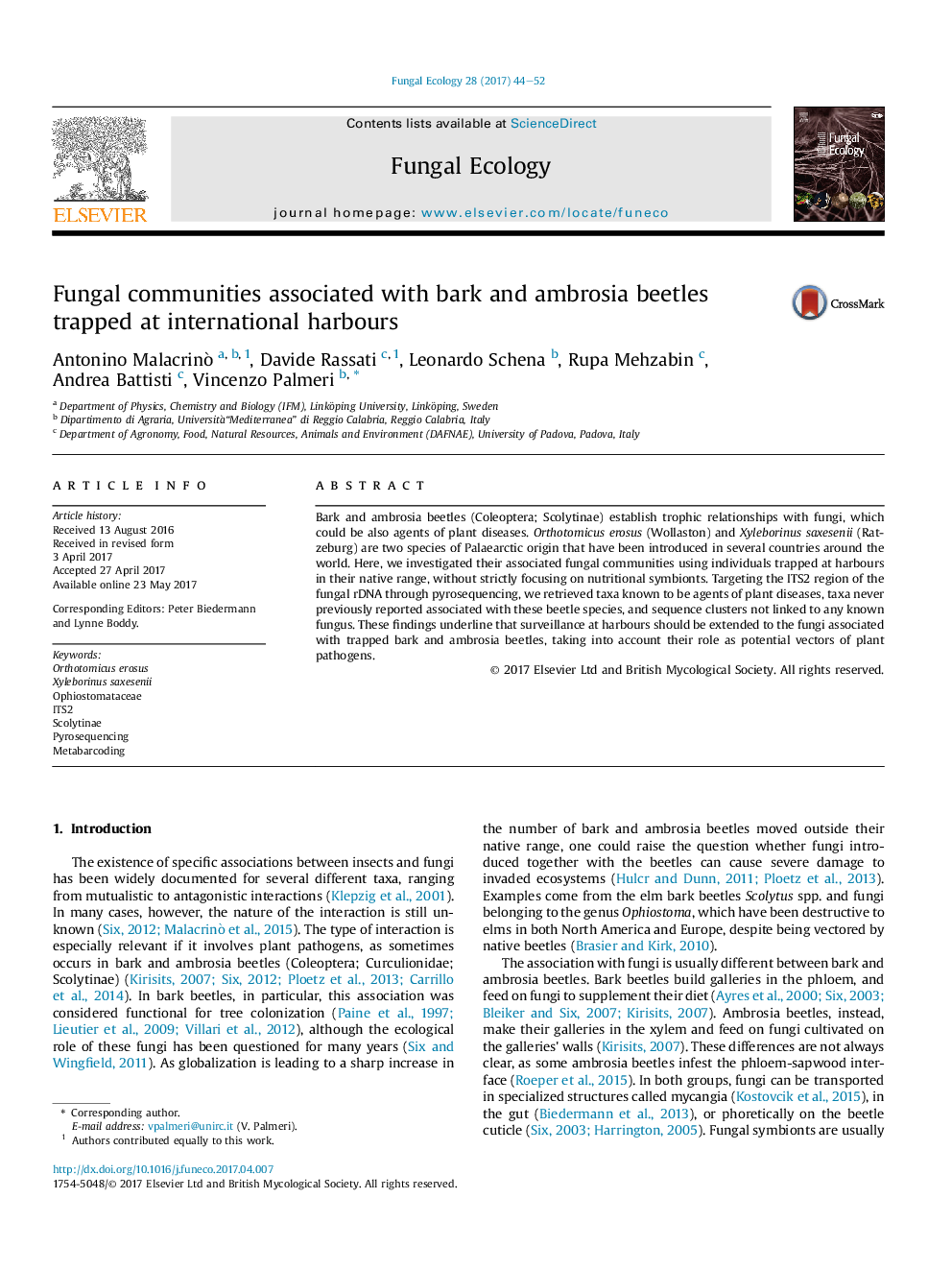| کد مقاله | کد نشریه | سال انتشار | مقاله انگلیسی | نسخه تمام متن |
|---|---|---|---|---|
| 5517617 | 1543638 | 2017 | 9 صفحه PDF | دانلود رایگان |
- Orthotomicus erosus and Xyleborinus saxesenii carry a diverse community of fungi.
- These beetles can act as carriers of novel and unknown plant pathogens.
- Sequence clusters not linked to any known fungus were associated to these insects.
- Surveillance at points of entry should include beetle-associated fungal communities.
Bark and ambrosia beetles (Coleoptera; Scolytinae) establish trophic relationships with fungi, which could be also agents of plant diseases. Orthotomicus erosus (Wollaston) and Xyleborinus saxesenii (Ratzeburg) are two species of Palaearctic origin that have been introduced in several countries around the world. Here, we investigated their associated fungal communities using individuals trapped at harbours in their native range, without strictly focusing on nutritional symbionts. Targeting the ITS2 region of the fungal rDNA through pyrosequencing, we retrieved taxa known to be agents of plant diseases, taxa never previously reported associated with these beetle species, and sequence clusters not linked to any known fungus. These findings underline that surveillance at harbours should be extended to the fungi associated with trapped bark and ambrosia beetles, taking into account their role as potential vectors of plant pathogens.
Journal: Fungal Ecology - Volume 28, August 2017, Pages 44-52
